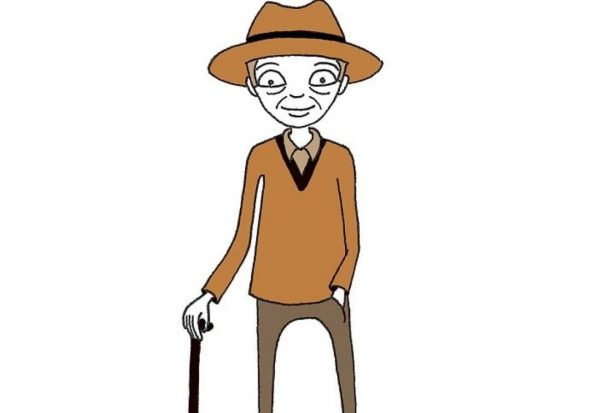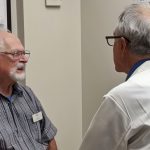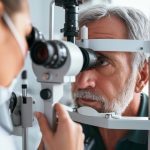As we humans grow older, we tend to lose lean muscle mass and strength. The medical name for it is sarcopenia.
It brings to mind images of those frail, thin, older adults that we often see at the grocery store… or the ones tottering between family members as they are guided to a table in a restaurant.
Sure, these seniors likely meet the criteria – you can tell just by looking at them that they are suffering from age-related muscle loss. But they aren’t the only ones.
The fact of the matter is that you don’t have to be old to suffer from muscle wasting.
For example, just a few years ago researchers tested a group of people who varied in age from 30 to over 100. These people took part in a few seemingly simple exercises. They had to rise from a chair repeatedly for 30 seconds, stand on one leg for a minute, and walk for six minutes.
It turned out that the ability to stand on one leg and repeatedly rise from a chair started to decline in people who were only in their 50s!
So let’s knock the “old age” aspect of sarcopenia right out of the window. Let’s also knock out the idea that you have to be thin or underweight. That certainly isn’t true.
A lot of people who are overweight and carrying excess body fat have low muscle mass and strength. We call it sarcopenic obesity. And it can be deceptive.
That’s because the excess weight makes it difficult to see that they are losing muscle mass beneath the fatty layers of their skin.
There is also something called “normal-weight obesity.” These are people who have excessive body fat, despite being a normal body weight. They may even wear the same size of clothes that they’ve always worn.
Who would ever guess these healthy-looking folks have simply been gaining fat while losing muscle mass?
And here’s the thing. We now know these people are more likely than to experience sarcopenia than their “normal weight without obesity” counterparts. A 2022 study comparing the two groups showed that normal-weight obesity increases sarcopenia risk in men by 22-fold, and 25-fold in women.
How You Lose Muscle Mass as You Age
Right now, you are probably wondering how you develop sarcopenia, and why it affects so many different body types.
Unfortunately, age-related muscle loss tends to sneak up on you. After the age of 30, muscle mass decreases approximately 3–8% per decade. This rate speeds up even more after the age of 60. So it’s a slow process.
In addition to that, we Americans are a lazy group of people. The older we get, the less we want to move. Simply put, many people just don’t get the physical activity needed to maintain strong, lean muscle mass.
The final straw is that, as we age, our muscles have a harder time synthesizing protein. So even if you’re eating enough protein – or more than enough – it won’t have the same affect it had on your muscle mass as it did when you were younger.
This is especially problematic for people with sarcopenic obesity who attempt to lose weight by going on low-calorie diets. If not accompanied with adequate exercise and an increase in protein intake, these types of diets will almost always result in a further reduction of lean muscle mass.
Unfortunately, sarcopenia is associated with all sorts of vascular disorders, such as plaque buildup in the arteries, decreased cardiopulmonary function and heart failure.
It’s also linked to insulin resistance and type 2 diabetes. Part of the reason for this is because low muscle mass alters the way blood sugar is metabolized.
But a lot of the reason for these poor health outcomes is the chronic inflammation associated with the condition.
Put all of these factors together, and they place the body in a state where it continually breaks down muscles and internal organs. In the long-term, that’s not a good thing.
In fact, sarcopenia can even reduce cognitive function and increase dementia risk. When researchers in China tested people 65 and older over a seven-year period, those with sarcopenia had worse scores on the Basic Dementia Risk Model, a test that predicts dementia risk.
This shows us exactly how important our muscles are to our overall health and well-being.
Fight Back Against Sarcopenia
If you want to recover and revive your weak and tired muscles to regain the strength and energy you had in your younger days, your first step is to switch to a healthy style of eating. You know the drill.
- Cut out the grains, processed foods, refined carbs and fried foods.
- Enjoy all of the fruits and veggies you want, from all colors of the rainbow.
- Limit your meat consumption to about 15% of your diet and always choose grass-fed beef, pasture-raised and wild-caught.
- Make ABSOLUTELY SURE to add more healthy sources of protein to your diet!
Your second step is to start moving.
Chair squats, wall push-ups, and supported lunge exercises are some of my favorite kinds of resistance exercises for sarcopenia. They use your own body weight to engage muscles and boost muscle mass. Plus, they’re movements that strengthen the muscles your body uses every single day.
It only takes about a half-hour a day, three days a week to get your resistance training in. I recommend performing the activity for a count of 10 before taking a short one-to-two-minute break. Then, perform two more sets of ten with another break between them. As you gain strength, increase the count and reduce your break time.
On the days you don’t perform your resistance training, you should still take the time to go on a nice, long walk. And that’s not only advice for the fit and firm. Even if you use a cane or walker, you should still be participating. Just don’t stray too far from home, and don’t over-do it.
Don’t let your fears hold you back from achieving good health with exercise.
If you have any concerns at all don’t hesitate to talk to your doctor first. He will be the first to tell you that simple, easy exercises are crucial when it comes to your health.
The old saying, “use it or lose it,” is particularly true when it comes to the muscle loss that occurs with age.
Choose to use it!
SOURCES:
Physical Declines Begin Earlier Than Expected Among U.S. Adults. Press Release. Duke Medicine. Jul 2016.
De Lorenzo A, Pellegrini M, Gualtieri P, Itani L, El Ghoch M, Di Renzo L. The Risk of Sarcopenia among Adults with Normal-Weight Obesity in a Nutritional Management Setting. Nutrients. 2022 Dec 13;14(24):5295.
Volpi E, Nazemi R, Fujita S. Muscle tissue changes with aging. Curr Opin Clin Nutr Metab Care. 2004 Jul;7(4):405-10.
Janssen TAH, Van Every DW, Phillips SM. The impact and utility of very low-calorie diets: the role of exercise and protein in preserving skeletal muscle mass. Curr Opin Clin Nutr Metab Care. 2023 Nov 1;26(6):521-527.
He N, Zhang Y, Zhang L, Zhang S, Ye H. Relationship Between Sarcopenia and Cardiovascular Diseases in the Elderly: An Overview. Front Cardiovasc Med. 2021 Dec 9;8:743710.
Damluji AA, Alfaraidhy M, AlHajri N, Rohant NN, Kumar M, Al Malouf C, Bahrainy S, Ji Kwak M, Batchelor WB, Forman DE, Rich MW, Kirkpatrick J, Krishnaswami A, Alexander KP, Gerstenblith G, Cawthon P, deFilippi CR, Goyal P. Sarcopenia and Cardiovascular Diseases. Circulation. 2023 May 16;147(20):1534-1553.
Mesinovic J, Zengin A, De Courten B, Ebeling PR, Scott D. Sarcopenia and type 2 diabetes mellitus: a bidirectional relationship. Diabetes Metab Syndr Obes. 2019 Jul 8;12:1057-1072.
Tessier AJ, Wing SS, Rahme E, Morais JA, Chevalier S. Association of Low Muscle Mass With Cognitive Function During a 3-Year Follow-up Among Adults Aged 65 to 86 Years in the Canadian Longitudinal Study on Aging. JAMA Netw Open. 2022 Jul 1;5(7):e2219926.
Lin A, Wang T, Li C, Pu F, Abdelrahman Z, Jin M, Yang Z, Zhang L, Cao X, Sun K, Hou T, Liu Z, Chen L, Chen Z. Association of Sarcopenia with Cognitive Function and Dementia Risk Score: A National Prospective Cohort Study. Metabolites. 2023 Feb 8;13(2):245.





